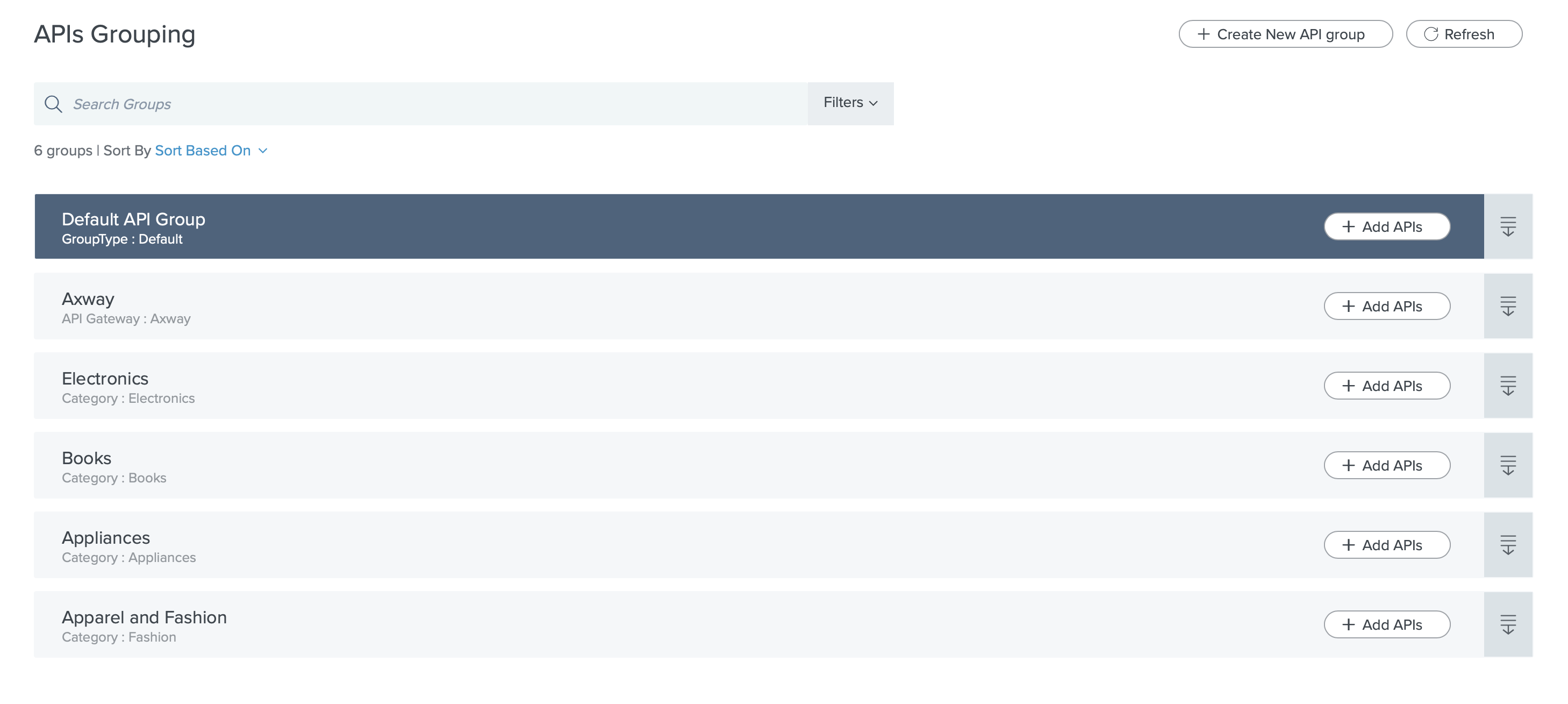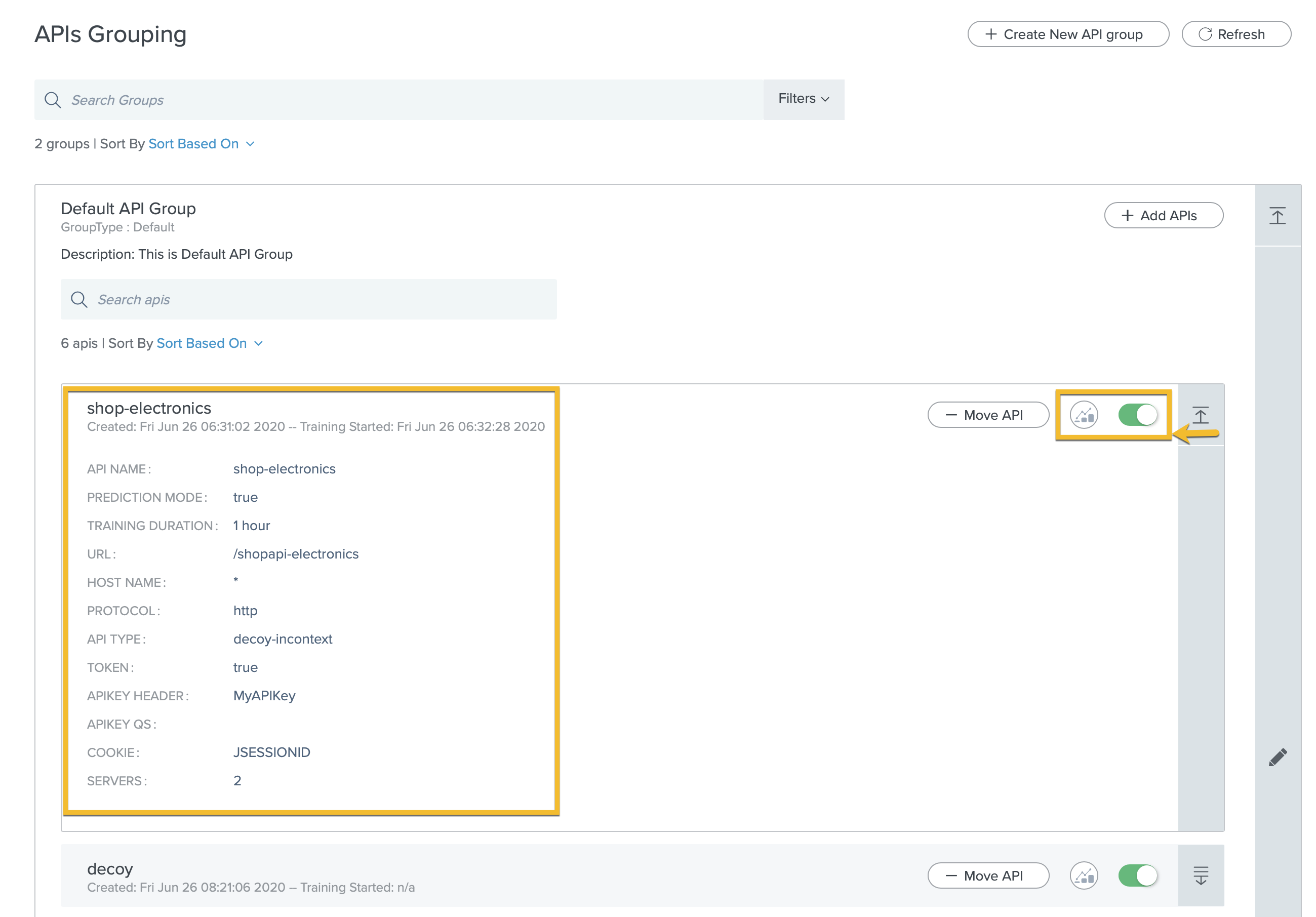API groups
The PingIntelligence dashboard provides the capability to organize the application programming interface (API) in your environment into logical groups. You can create API groups as per your requirements. For example, you can group your APIs location-wise, functionality-wise, and so on.
The API tab displays all the APIs being managed by PingIntelligence. Every API will be part of at least one API group in the Dashboard. The APIs grouping feature makes searching for a specific API quick and easy. The Dashboard supports two kinds of groups:
-
Default API group: This is the global API group. All the existing as well as newly discovered APIs will be part of it initially. APIs that do not belong to any other API group will automatically get added to the default API group. You can only view and move APIs from the default APIs group. You cannot delete an API from the default API group.
-
User-defined API groups: These are the API groups that you can create based on your requirements. You can add or delete an API from the user-defined API groups.

API details
Click on the Expand icon  to expand an API group. The following details are available for each API within an API group.
to expand an API group. The following details are available for each API within an API group.
| API | Description |
|---|---|
API name |
API name used by PingIntelligence |
Prediction mode |
A |
Training duration |
The minimum configured time in hours to train an API. For more information, see Managing AI engine training. |
URL |
API basepath Uniform Resource Locator (URL) configured in the API JavaScript Object Notation (JSON) file. For more information, see Defining an API using API JSON configuration file in inline mode. |
Host name |
Host name of the API configured in the API JSON file. For more information, see Defining an API using API JSON configuration file in inline mode. |
Protocol |
The protocol configured in the API JSON file. For more information, see Defining an API using API JSON configuration file in inline mode. |
API type |
API type can be |
Token |
A |
API Key header and API key query string (QS) |
The API Key values configured in the API JSON file and used for reporting and attack detection. For more information, see Defining an API using API JSON configuration file in inline mode. |
Cookie |
The cookie value configured in the API JSON file and used for reporting and attack detection. Displays blank if a cookie was not configured in API JSON. For more information, see Defining an API using API JSON configuration file in inline mode. |
Servers |
The back end API server configured in the API JSON file - "*" supports all the host names. For more information, see Defining an API using API JSON configuration file in inline mode. |
Click the Toggle button  to hide or display information for the API in the PingIntelligence Dashboard. This provides the flexibility to display only selected APIs. Even if an API is hidden from the API dashboard, the dashboard engine continues processing its metadata. The hidden API is moved to the end of list. If the APIs are paginated, the hidden APIs are moved to the last page. When you toggle the button to display a hidden API, the Dashboard displays data for the API on the Dashboard. You can also go to the API activity dashboard for the API, by clicking the API analytics icon
to hide or display information for the API in the PingIntelligence Dashboard. This provides the flexibility to display only selected APIs. Even if an API is hidden from the API dashboard, the dashboard engine continues processing its metadata. The hidden API is moved to the end of list. If the APIs are paginated, the hidden APIs are moved to the last page. When you toggle the button to display a hidden API, the Dashboard displays data for the API on the Dashboard. You can also go to the API activity dashboard for the API, by clicking the API analytics icon  .
.
